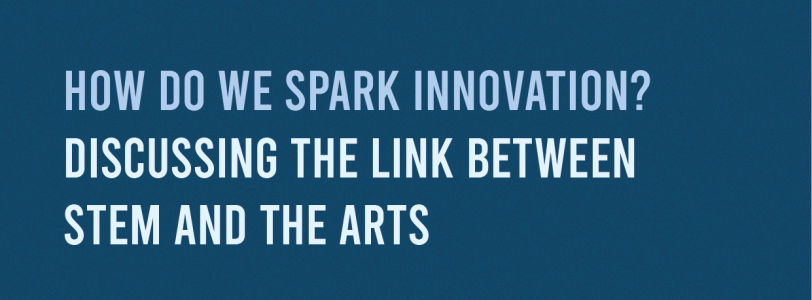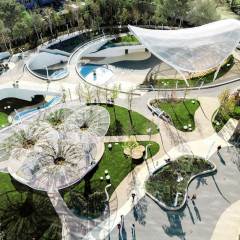How do we spark innovation? Discussing the link between STEM and The Arts:
Glossary:
STEM: abbreviation for Science, Technology, Engineering and Mathematics
The Arts: subjects, such as art, music, dance and non-scientific subjects
STEAM: abbreviation for Science, Technology, Engineering, Arts and Mathematics
Introduction
When we look at STEM and The Arts, we commonly separate the two. With a recent shift in mindset, we are starting to close this gap and lean more into the idea of STEAM with the goal of aiding innovation and better preparing individuals for the job market.
Breaking Down Myths & Early Education
In the blog post ‘Right brain/left brain, right?’, Robert H. Shmerling, MD, breaks the stereotype that we are inherently born with a creative or academic brain (R,H. Shmerling, MD, 2022). This suggests that a STEAM focus within schools could prove successful as it would allow a wider range of personalities to flourish.
One reason why creativity is often overlooked within schools is because of the pressure to abide by a rigid curriculum. This means there is no space left for the cross migration of subjects. Many schools do not have the time, staff or budget to put resources into creative courses as it can infringe on the teaching of STEM subjects. This can be even more prevalent within larger schools where it can be difficult to monitor every student’s progress or individual requirements (Scholastic UK, 2016).
Examples of STEAM in practice:
Throughout history, individuals have promoted innovation and adaptability skills. Within each field of work, problem solving and quick thinking is required. This goes to show the importance of creativity, even in traditionally academic fields, meaning we should not disregard their importance.
In the video ‘Science and Arts are not as different as we think’ we are given multiple examples of researchers presenting their work through creative mediums. One of these examples included creating a visual representation of sound waves. Utilising The Arts within science is shown to deepen innovation, leading to a greater understanding of the world around us (K, Levier, 2020).
Another famous example includes the work of Leonardo da Vinci. Da Vinci was renowned for having many different professions as an artist, mathematician and philosopher (to name just a few). This multi-faceted approach sparked innovation and rejects the notion that we are born either academic or creative (K, Levier, 2020).
How can STEAM benefit learners?
Approximately sixty-five percent of the general population are visual learners, five percent are kinaesthetic learners and the remaining thirty percent consist of audio learners (M, St.Louis, 2017). Predominantly, STEM has been taught through the medium of audio (E.g. class lectures) (W,C, Bradford. 2011).
Including The Arts within teaching methods can support seventy percent of the population when learning traditional STEM core subjects. Combining STEM and The Arts can make core STEM subjects less daunting and subsequently break down barriers to provide access to student abilities that may have otherwise been left unrealised.
As seventy percent of the general population are visual and kinaesthetic learners, including art, movement and/or storytelling (etc.) within education can also aid understanding and retention of information (M, St.Louis, 2017).
Additionally, The Arts create safe spaces and aid independence and wellbeing for many. This is stated in the 2019 Mental Health Foundation article:
“Making art can enable people to take greater responsibility for their own health and wellbeing, by helping maintain levels of independence and curiosity and improve the quality of life by bringing greater joy.”
This implies that with the integration of STEAM, students will develop deeper skillsets resulting in a more varied landscape of careers to choose from;
“from software engineers and aerospace technicians to biotechnical engineers, professional mathematicians, and laboratory scientists knows that building great things and solving real problems requires a measure of creativity. (M,B, Hertz. , 2016)”
How can we change for the future?
To make the change for the future, the inclusion of STEAM as a teaching concept could help shift the overall learning emphasis from being subject specific to a more integrated and inclusive platform. A STEAM approach can help students that may have otherwise been excluded from certain subjects into realising their true potential and thus benefiting our future workforce.
Examples of STEAM methods:
Workshops -
Workshops can improve problem solving, creativity, independence and collaboration. Including methods such as construction, creative writing, storytelling, puzzles and brain teasers can stimulate learning. Encouraging analysis of a topic at the end of a workshop can increase retention to aid learners. This could be achieved through activity diaries and general communication with class piers through email chains/social media links.
Independent Study -
Promoting independent study can increase innovation by exposing learners to a wider variety of experiences. Independent study can be achieved through educational media, reading, exploring different mediums of art, ‘getting out’ within nature, exercise, movement and exploring the local culture.
Performing Arts -
Including performing arts within educational environments can increase confidence and allow students to develop new skills. This can be implemented through live music, amateur dramatics societies and visual art exhibitions, etc.
Acknowledging all of these concepts can create a fully rounded view when discussing the ‘A’ in STEAM and elevate student experience.
Conclusion
It is crucial that we begin looking at individuals as individuals. Keeping an open mind and providing learners with an opportunity to develop their skills without prejudice is critical as future generations move into the workforce and continue to evolve. It is clear that from the evidence discussed, following a STEM approach to learning can cast aside the needs of the majority of students.
Utilising STEAM practices within education will spark innovation and encourage learners to develop new skills. Increasing the time, space and funding required for STEAM subjects will invigorate learning environments and break down barriers.
References:
How to Spot Visual, Auditory, and Kinesthetic-Learning Executives | Inc.com
Full STEAM Ahead: Why Arts Are Essential in a STEM Education | Edutopia
Science and Art are not as different as we think | Kristin Levier
Resources:






0 Comments